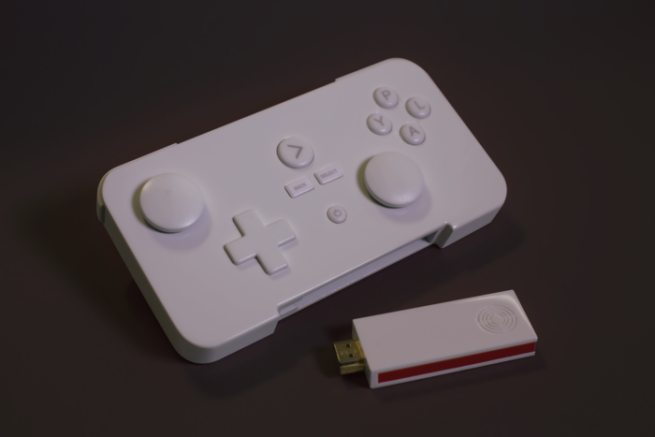Over 1,600 backers have contributed nearly $160,000 to a gaming console the size of a thumb drive.
[aditude-amp id="flyingcarpet" targeting='{"env":"staging","page_type":"article","post_id":598972,"post_type":"story","post_chan":"none","tags":null,"ai":false,"category":"none","all_categories":"games,","session":"D"}']The GameStick Kickstarter project from developer PlayJam asked for $100,000 to help fund production on the tiny Android-based gaming device. It surpassed that goal in just 30 hours. The campaign currently sits at $158,904 with 27 days left to raise contributions.
“The response from the Kickstarter community has been truly overwhelming,” said PlayJam chief marketing officer Anthony Johnson. “We are confident in our product and what we hope it will mean for gaming, but we were taken aback at how quickly the message was adopted. There is no better feeling than having hundreds if not thousands of people endorse your idea.”
PlayJam is one of the largest networks of casual games. It has already done some legwork to get its games on smart TVs that run smartphone-like applications, but with GameStick, it’s hoping to help other developers do the same.
GameStick is an HDMI drive the size of a USB stick. The console is so tiny that it even nests safely inside the included controller for easy portability.
“While we are shipping as a dedicated games console,” said Johnson, “we are keen to ensure that users have the ability to hack the device if they so wish, and [we] will be providing support for XBMC and DNLA via an optional firmware update in September. We encourage users to hack the device — the time for closed, proprietary systems is ending, which bodes well for true innovation.”
In 2011, gaming-based Kickstarters skyrocketed in popularity. One of the most iconic successes on the crowdfunding platform was the Ouya Android-based gaming console. Ouya and GameStick are very similar. They both use Android, both promise to remain completely open for hacking, and both focus on television-based gaming.

